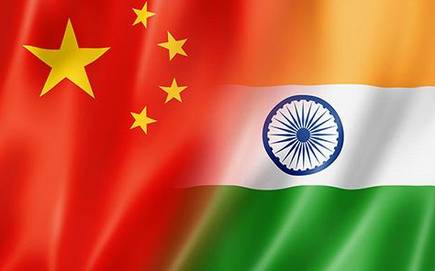Chinese troops resort to aggressive posturing in Ladakh, North Sikkim: Sources
Both the Indian and Chinese armies have brought in more troops in sensitive locations like Demchok, Daulat Beg Oldie and areas around Galwan river as well as Pangong Tso lake in Ladakh

By PTI
New Delhi: Tension is gradually building up between Indian and Chinese armies in several areas in Ladakh and northern Sikkim along the un-demarcated Sino-India border with both sides bringing in additional troops, days after they were involved in two violent face-offs, authoritative sources said on Tuesday.
Both the Indian and Chinese armies have brought in more troops in sensitive locations like Demchok, Daulat Beg Oldie and areas around Galwan river as well as Pangong Tso lake in Ladakh, the sources said.
The area around Galwan has been a point of friction between the two sides for over six decades. They had a showdown over it in 1962 as well.
The sources said both the sides have deployed their troops around
their troops around Galwan river and Pangong Tso lake — the two areas where they used to carry out border patrol.
It is learnt that Chinese side has erected a sizeable number of tents in the Galwan Valley area following which India is keeping a hawk-eye vigil there.
On May 5, around 250 Indian and Chinese army personnel clashed with iron rods, sticks, and even resorted to stone-pelting in the Pangong Tso lake area in which soldiers on both sides sustained injuries.
In a separate incident, nearly 150 Indian and Chinese military personnel were engaged in a face-off near Naku La Pass in the Sikkim sector on May 9. At least 10 soldiers from both sides sustained injuries in the incident, according to the sources.
Neither the Army nor the Ministry of External Affairs commented on the escalating tension between the two armies.
In its reaction to the two face-offs, the Ministry of External Affairs last week said it remained committed to maintaining peace and tranquility along the border with China, noting that such incidents could have been avoided if there was a common perception about the frontier.
It is learnt that additional troops have also been rushed to several areas in northern Sikkim as part of their aggressive posturing in guarding the disputed border.
A report by China”s official media on Monday said Chinese troops have bolstered their border control measures in the Galwan Valley in the Aksai Chin region.
The Chinese action followed “India”s recent, illegal construction of defence facilities across the border into Chinese territory in the Galwan Valley region,” a write-up in the state-run Global Times tabloid said, quoting unnamed military sources.
The aggressive posturing by the two sides came amid India”s escalating border row with Nepal over construction of a strategically key road linking Lipulekh Pass with Dharchula in Uttarakhand.
Army Chief Gen MM Naravane last week said Nepal objected to the newly-inaugurated road at the behest of “someone else”, in an apparent reference to a possible instigation by China on the matter. Nepal rejected the comments.
The Lipulekh pass is a far western point near Kalapani, a disputed border area between Nepal and India. Both India and Nepal claim Kalapani as an integral part of their territory.
It was not clear whether Gen Naravane will visit Nepal soon, following a tradition of the new Indian Army Chief visiting Nepal after taking charge.
His predecessor Gen Bipin Rawat visited Nepal less than three months after taking charge during which he was conferred the title of honorary general of the Nepalese Army. There is a custom of honouring the army chiefs of Nepal and India by each other keeping with the traditional friendly ties.
China on Tuesday said the Kalapani issue is between India and Nepal and hoped that the two neighbours would refrain from “unilateral actions” and properly resolve their disputes through friendly consultations.
The 80-km-long strategically crucial road at a height of 17,000 km along the border with China in Uttarakhand was thrown open by Defence Minister Rajnath Singh on May 8.
The troops of India and China were engaged in a 73-day stand-off in Doklam tri-junction in 2017 which even triggered fears of a war between the two nuclear-armed neighbours.
The India-China border dispute covers the 3,488-km-long Line of Actual Control, the de-facto border between the two countries.
China claims Arunachal Pradesh as part of southern Tibet while India contests it.
Both sides have been asserting that pending the final resolution of the boundary issue, it is necessary to maintain peace and tranquility in the border areas.
China has been critical of India”s reorganisation of J-K, and has particularly criticised New Delhi for making Ladakh a union territory. China lays claim over several parts of Ladakh.
Prime Minister Narendra Modi and Chinese President Xi Jinping held their first informal summit in April 2018 in the Chinese city of Wuhan, months after the Doklam standoff.
In the summit, the two leaders decided to issue “strategic guidance” to their militaries to strengthen communications so that they can build trust and understanding.
Modi and Xi held their second informal summit in Mamallapuram near Chennai in October last year with a focus on further broadening bilateral ties.